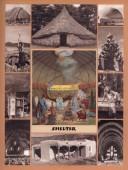| Listing 1 - 3 of 3 |
Sort by
|
Book
ISBN: 019913233X Year: 1976 Publisher: London Oxford University Press
Abstract | Keywords | Export | Availability | Bookmark
 Loading...
Loading...Choose an application
- Reference Manager
- EndNote
- RefWorks (Direct export to RefWorks)
In many of our cities streets are dying, killed by traffic, planning mistakes, housing shortage and dwindling services. Whole neighbourhoods are dis- appearing almost overnight. Well known landmarks vanish. Massive new buildings and roads rise up to dominate the district. Much of this is the result of slum clearance and redevelopment programmes. But what makes an area a slum, and who decides that it is one? How can the communities affected best make their voices heard? This book aims to Change the street: identifying the problems and suggesting action, based on the success of people who have managed to make their streets attractive and pleasant to live in, looking after the buildings, planting trees and flowers-most of all making them 'streets for people'.
Didactics of English --- Stedenbouw ; denken over ; duurzame samenleving --- Hippiecultuur --- Architectuur en maatschappij ; alternatieve samenlevingsmodellen --- Sociologie ; sociale processen ; samenwerken --- Stedenbouw ; stadsvernieuwing ; participatie --- 711.61 --- Stedenbouw. Ruimtelijke ordening ; pleinen, open ruimten
Book
ISBN: 0704501597 Year: 1976 Publisher: London Wildwood House
Abstract | Keywords | Export | Availability | Bookmark
 Loading...
Loading...Choose an application
- Reference Manager
- EndNote
- RefWorks (Direct export to RefWorks)
Radical Technology is a large-format, extensively illustrated collection of original articles concerning the reorganisation of technology along more humane, rational and ecologically sound lines. The many facets of such a reorganisation are reflected in the wide variety of contributions to the book. They cover both the 'hardware' - the machines and technical methods themselves - and the 'software' - the social and political structures, the way people relate to each other and to their environment, and how they feel about it all.The articles in the book range from detailed 'recipes' through general accounts of alternative technical methods, to critiques of current practices, and general proposals for reorganisation. Each author has been encouraged to follow her or his own personal approach, sometimes descriptive, sometimes analytic, sometimes technical, sometimes political. The contributors are all authorities in their fields. The book is divided into seven sections: Food, Energy, Shelter, Autonomy, Materials, Communication, Other Perspectives. Over forty separate articles include items on fish culture, small-scale water supply, biological energy sources, a definitive zoology of the windmill, self-help housing, building with subsoil, making car-tyre shoes, the economics of autonomous houses, what to look for in scrap yards, alternative radio networks, utopian communities, and technology in China. Between the main sections are interviews with prominent practitioners and theorists of Radical Technology, including John Todd of the New Alchemy Institute; Robert Jungk, author of Humanity 2000; the Street Farmers, a group of anarchist architects; Peter van Dresser; and Sietz Leeflang, editor of Small Earth, the Dutch journal of alternative technology. Also included between the main sections of the book is a series of visionary drawings by the gifted illustrator Clifford Harper, evoking the spirit and practice of Radical Technology: 'how it could be'. These drawings, or 'visions' include a communal- ised urban garden layout; a household basement workshop; a community workshop; a community media centre; a collectivised terrace of urban houses; and an autonomous rural housing estate, The book ends with a comprehensive directory of the literature and active organisations in Radical Technology. This notes inevitable gaps in the book's coverage, points the reader to where more information can be found, and provides also an overall picture of a growing movement. It is an unusual book.
62 --- #TWER:d.d.Prof.G.De Lepeleire --- Ingenieurswetenschappen. Technologie in het algemeen --- Hippiecultuur --- Ontwerppraktijk ; DIY (Do It Yourself) design ; om zelf te maken --- Natuurlijke materialen ; DIY --- Ambachten ; vakmanschap ; handwerk ; en beoefenaars --- 749.02 --- Architectuur ; bouwtechnieken ; ambachten --- Meubelkunst en design ; technieken, materialen

ISBN: 0394488296 0394709918 9780394709918 Year: 1973 Publisher: Bolinas: Shelter publications,
Abstract | Keywords | Export | Availability | Bookmark
 Loading...
Loading...Choose an application
- Reference Manager
- EndNote
- RefWorks (Direct export to RefWorks)
Shelter is published by Shelter Publications, a non-profit educational organization chartered in California for the purpose of gathering information on hand-built housing and the building crafts, maintaining a network of people interested in building and shelter, and publication of the best available information.
Dwellings. --- Habitations --- Autoconstruction --- Construction en bois --- Construction en matériau végétal --- Construction en pierre --- Construction en terre --- Construction traditionnelle --- Petite construction --- Architecture spontanée --- Architecture traditionnelle --- Architecture vernaculaire --- Construction a coût réduit --- Structure --- Structure en bois --- Structure légère --- Structure naturelle --- Structure suspendue --- Structure tendue --- Structure tridimensionnelle --- Tourism --- architecture [discipline] --- tents [portable buildings] --- Architecture --- cabins [houses] --- Dwellings --- Domiciles --- Homes --- Houses --- One-family houses --- Residences --- Residential buildings --- Single-family homes --- Buildings --- Architecture, Domestic --- House-raising parties --- Household ecology --- Housing --- Toerisme --- Architectuur --- architectuur [vakgebied] --- hutten --- tenten --- Architecture marginale --- Construction à coût réduit --- Hippiecultuur --- Primitieve architectuur --- Architectuur en natuur ; kleine constructies ; hutten --- Noodwoningen, hutten, tenten --- Cabines ; hutten ; barakken --- 72.031.2 --- Architectuurgeschiedenis ; primitieve en vernaculaire architectuur
| Listing 1 - 3 of 3 |
Sort by
|

 Search
Search Feedback
Feedback About UniCat
About UniCat  Help
Help News
News